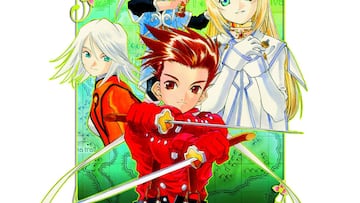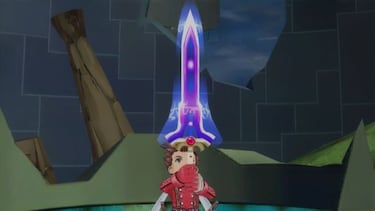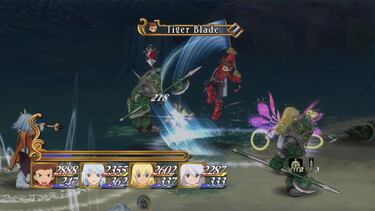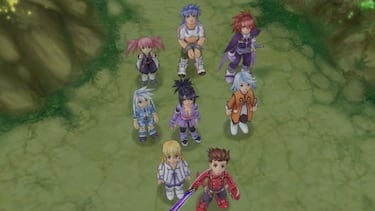Tales of Symphonia Remastered trips and fumbles an otherwise incredible game
Tales of Symphonia Remastered somehow managed to trip itself up and release what is arguably the worst version yet of an incredible classic RPG.

The “Tales of” series has always been a little bit of an outlier in the main scenario of RPGs. Its active battle systems have always differentiated the franchise from its contemporaries ever since the release of the first game (Phantasia) on SNES back in the mid-90s, continuing all the way to the present with new titles and tech. But for many, it was Tales of Symphonia on the GameCube which captured their attention and gave them their love of the genre. With hundreds of hours of gameplay and story, awesome character development and twists, and an extremely fun combat system that players can tailor to their playstyle, Symphonia is regarded as one of the best titles on Nintendo’s 4th console generation.
So it was quite a sour surprise to find out that Tales of Symphonia Remastered is mostly a port of the game’s worst version on current consoles.
Great game, bad situation
For those of you that are yet to play Tales of Symphonia, the story is set in the world of Sylvarant, which is a wartorn planet recovering from long years of war. To save the planet, a Chosen is selected to perform a ritual of “Regeneration”, in which they must travel the land to break open magical seals so Mana can flow into the world again and heal it. You play as Lloyd, a young human whose friend Colette is the so-called Chosen, and eventually get involved in their pilgrimage to save the world. Along the way, you deal with a race called Desians who are experimenting with humans in concentration camps, uncover unexpected plot twists, and gather powerful allies to complete your mission. All very basic JRPG stuff at first glance, but with many spoilery surprises along the way.

Even if you’re not into the story (although we highly recommend you give it a look), its 3D real-time combat is fascinating. With up to 4 characters in your party at any given time, you get to take control of every detail in the battle with none of the waiting or turn-based action the genre is known for. Before long, you’ll be juggling all of your options in large brawls, with several enemies to face off at the same time while you desperately try to heal your frontline fighters, or charging up powerful spells from the back of the fight. Bosses can be incredibly big, with some incredible music to accompany the fights that make you feel heroic and powerful during a fight.

Yes, the writing can be slightly cheesy (it is a game from 2004, after all), but it does its job of building up the story and events of the game quite well. All of this is also backed by full voice acting of the game during combat and cutscenes. Back when it was released on GameCube, the title boasted a smooth 60fps, and it became popular enough to boost the entire franchise for years after its release. But this is not that version.
A lukewarm attempt at bringing back a classic
Tales of Symphonia Remastered is based on the PlayStation 3 re-release of the game, which in itself is an upscaling of the PS2 version released in Japan. This edition of the game came with a locked framerate of 30fps, muddied textures, and missing content that quite honestly baffles the imagination. We’re not talking about entire dungeons or areas, or characters being cut out, but literal lines of dialogue that were deleted for no reason, weapon models being changed, icons replaced by lower-quality versions, and so on.
And all of these changes have been carried all the way up to this remaster. Dialogue is missing, textures are mismatched upon close inspection, and audio cuts off randomly (to be fair, the voice-acting recordings have not aged well and are now noisy and crispy) during cutscenes. The fact that this is being called a remaster led some fans to imagine that Bandai Namco would fix some of these mistakes from the previous versions, but that wasn’t the case.

To make matters worse, at release (on the PlayStation 4 version playing on PS5) the game was poorly optimized for the console. Load times were extremely long for a modern console, taking upwards of 30 seconds to change maps and frequently getting hung up on battle transitions in dungeons. We were faced with frequent slowdowns and had to stop playing to wait for a patch after reaching the desert town early in the game due to a cutscene completely annihilating the frame rate to the point where our console ramped up its fans like a jet about to take off.
Admittedly, this has since been patched, and the PS5 version now runs much better, although still locked at 30fps, and load times are still unacceptably long. An audio issue in which when changing between the world map and an explorable location, the game cuts to a black screen while loading and when it comes back everything seems to have been running the entire time, with music starting mid-song and NPCs moving around already.
We were hopeful that perhaps other versions of the game would have better performance, so while we waited for the previously mentioned patch we went out and decided to buy the Switch version in a physical format. As you may have already heard, this other version is so broken that Bandai Namco officially apologized for it. But its truly a bad time for fans of the game on the Nintendo console: super long load times, bad audio, frequent cuts to black, missing animations and transitions, and even more.
But our biggest problem with this specific version, petty as it may seem, is the fact that for some reason it was decided that menus and overlays now have to appear with blank backgrounds, instead of showing a blurred-out image of the game at the moment it was paused. This means that not only do you make frequent cuts to black anytime you manage inventory or characters, but the series’ classic field conversations also happen inside of a black void. The worst part is that there is no consistency to these problems whatsoever, with them happening randomly and unexpectedly.
Messy and dissapointing
Related stories
Tales of Symphonia, in itself, is an amazing title that fans of JRPGs should play through at least once in their lives. But this remaster is incredibly disappointing in that it fixes none of the problems previous versions had, and even introduces some unexpected new ones. In a time where so many remakes are being lauded for their impressive looks and reimaginings of the original titles, and even remasters are made to look like entirely new games (looking at you, Crisis Core: Final Fantasy VII - Reunion), this release of a classic makes it feel like no love was put into it, and like it was pushed out the gates to make some quick money.
Even if it is fixed and upgraded by the developers and publisher through patches and updates, it’d be difficult to recommend at the heavy price of $40 USD. You’d be better off hunting for an old GameCube and a copy of the original Tales of Symphonia.